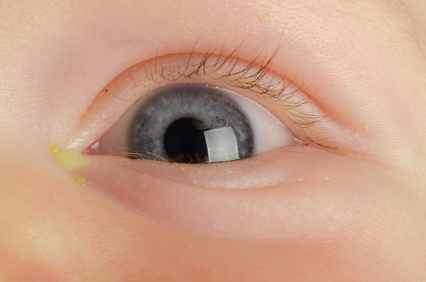 It is quite common for babies to experience newborn eye discharge in the early stages of their lives. The condition will often pass without the need of intervention, although in some cases, medical evaluation may be suggested. Ascertaining the common causes and effects of eye discharge in newborns will help you understand when treatment may be necessary. This article will detail the common causes, as well as provide tips on how to manage eye discharge in newborns.
It is quite common for babies to experience newborn eye discharge in the early stages of their lives. The condition will often pass without the need of intervention, although in some cases, medical evaluation may be suggested. Ascertaining the common causes and effects of eye discharge in newborns will help you understand when treatment may be necessary. This article will detail the common causes, as well as provide tips on how to manage eye discharge in newborns.
Possible Causes of Newborn Eye Discharge
1. Blocked Tear Duct
It is estimated that around 10% of newborn babies have this condition. The main symptom is a persistent watery eye, causing tears to run down the face even when no crying is occurring. Typically, the eyes will not become bloodshot of inflamed. Secondary infections can occur within the watery eye, leading to the formation of pus.
2. Normal Discharge
On some occasions, slight discharge of the eye may just be caused by mucus, often resulting from an irritant that was rubbed into the eye via dirty hands. This can be easily wiped away with warm water and no further treatment is required.
3. Foreign Body in Eye
Small particles, such as sand and dust, can be blown into one’s eye. If this foreign body is not removed from the eye, a reaction to the foreign body would be produced, leading to newborn eye discharge. If your child seems to have an eye infection and it is unresponsive to antibiotics, then a foreign body in the eye may be the cause.
4. Bacterial Conjunctivitis
This condition is a bacterial infection that affects the eyes. Common symptoms include the discharge of pus and the sticking together of eyelids. This condition may be apparent in both eyes or in only one eye.
How to Manage Newborn Eye Discharge
1. Wipe Away the Discharge
The first course of action should be to remove the discharge from your child’s eye. This can be done via the use of a soft and clean cloth, along with clear warm water. Use the soaked cloth to gently wipe away the pus from your child’s eye.
2. Massage the Tear Ducts
Massaging the tear ducts can help to unblock them. The tear ducts reside in the bottom corner of the eyes by the nose. With a well-cleaned finger, gently massage the duct by performing a semi-circle motion towards the nose from the corner of the eye. Perform around 5 to 10 sets and repeat the process around six times daily.
You can learn more about how to unclog the tear duct by watching the following video demonstration.
3. Apply Breast Milk
Breast milk is known to have vast amount of antibiotic properties and white blood cells. If your child has newborn eye discharge, applying a small drop of breast milk to the nasal corner of the eye can have an extremely beneficial effect on the condition. It is much safer than medical alternatives.
4. See the Doctor
If the above methods have no long lasting effect on your child’s condition, it may be wise to visit a doctor. In some cases, prescribed medication may be required to treat and cure the condition.
5. Probing
If your child is experiencing discharge of the eye due to blocked tear ducts and none of the methods listed above have had a beneficial effect or your child's tear ducts are still blocked by the age of nine months, then a procedure known as tear duct probing may be recommended. It is carried out by a pediatric eye specialist with the use of general anesthesia and it involves the use of a small wire to unblock the tear ducts.
Other Moms’ Experiences on Newborn Eye Discharge
“My newborn son had a blocked tear duct in his left eye. It would fill with water all the time, as though he was consistently crying. I was advised to use boiled water that had been thoroughly cooled to bathe his eye with the use of a pad which was lint-free (cotton, I was told, can affect the eye negatively). You should only rub one way and throw the pad away after use to avoid possibly spreading the infection.”
“I wasn’t sure what caused my newborn's eye discharge and antibiotics did nothing to clear the condition. I was told to try the use of breast milk which seemed to clear the condition after a few days.”
“Both of my son’s eyes had blocked tear ducts when he was born. One cleared up on its own after a couple of months while the other did not clear up until he was two. I was told by the doctors that the condition was nothing to be concerned about unless the whites of the eyeballs were to turn red. I found that breast milk, when gently applied to the nasal corner of the eyes, worked well to ease the condition.”
“My child too had blocked tear ducts. I visited the doctor who said that there was nothing to worry about unless eyes turned red. I was advised to gently massage the tear ducts, which seemed to work wonders for my child’s condition. The tear ducts were unblocked after only two gentle massages.”

